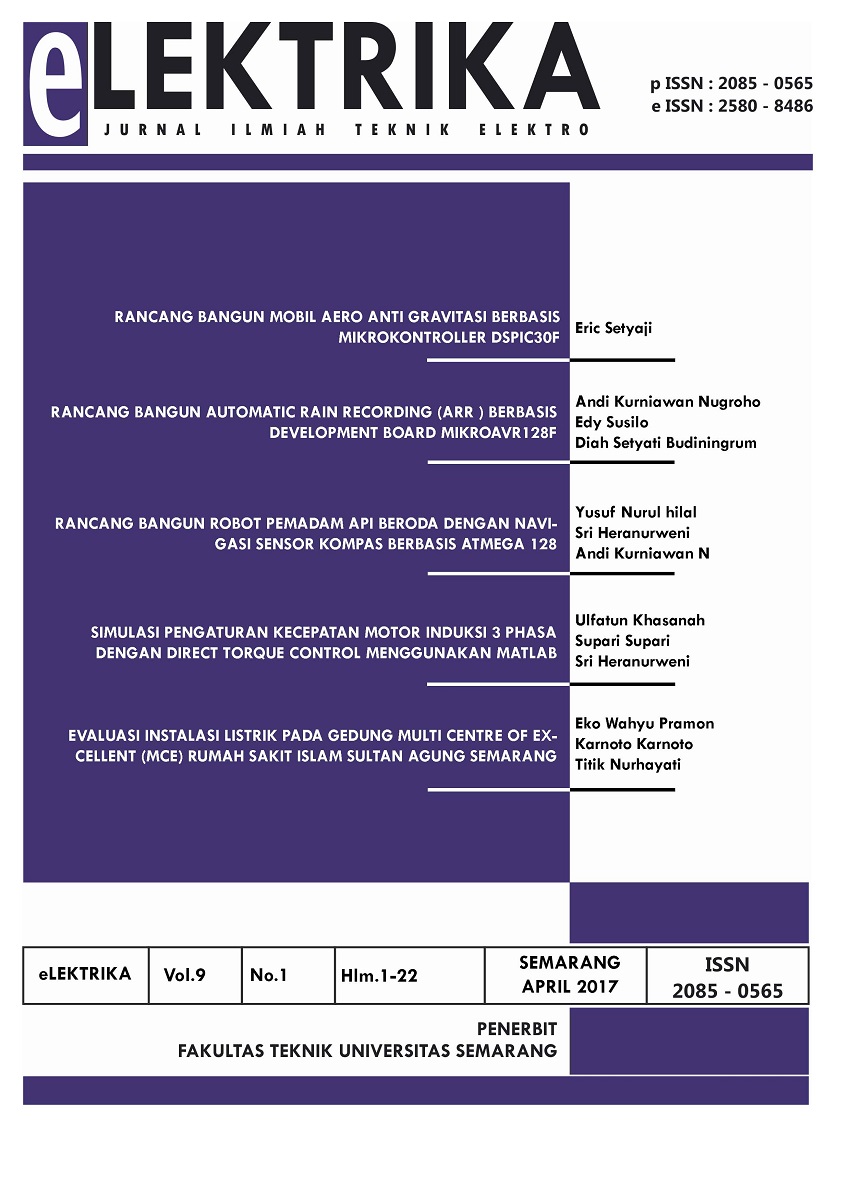RANCANG BANGUN MOBIL AERO ANTI GRAVITASI BERBASIS MIKROKONTROLLER DSPIC30F
DOI:
https://doi.org/10.26623/elektrika.v9i1.1106Keywords:
Aero Anti-grvitasi Car, DSPIC30F.AerodynamicAbstract
The car continues to develop the technology for the sake of convenience for the user to get a car. Currently the cars already provide many services, including : features - features, the fuelefficient, environmentally friendly, and safety while driving. But comfort when driving on the road is still not perceived as bottlenecks that often occur. Cars are often stuck in traffic will experience a diecasting machine, because the machine lights up constantly - constantly in a state of standstill. Researchers of this problem offers solutions in the field of transport. Researchers create Design of Aero Anti-Gravity Car Microcontroller-based dsPIC30F . It was inspired from a means of transportation that can resist the force of gravity, among others : airplanes, helicopters, jets and rockets. So that the principle of work on the Anti-Gravity Car s is the aerodynamic system of microcontroller-based dsPIC30F.
Keywords : Aero Anti-grvitasi Car, DSPIC30F.Aerodynamic
Downloads
References
Fransbudit. 2008. Hukum Gravitasi Newton . Bandung : ITB. Mardiyan. 2011. Aerodinamika . Wordpress. Microchip. 2002. Brushless DC Motor Control Made Easy . Microchip Technology Inc. Microchip. 2005. DSPIC30F4011/4012 Data Sheet . Microchip Technology Inc. Satrijo, Djoeli. 1999. Aerodinamika . Wordpress. Universitas Gunadarma. 2011. Teknik Rangkaian Listrik 2
Downloads
Published
Issue
Section
License
Authors who publish this journal agree to the following terms:
The author owns the copyright and grants the journal the first publication rights with the work simultaneously licensed under the Creative Commons Attribution 4.0 International License which allows others to share the work with recognition of the authorship of the work and initial publication in the journal.
Authors may enter into separate additional contractual agreements for non-exclusive distribution of the published journal version of the work (e.g., posting it to an institutional repository or publishing it in a book), in recognition of its initial publication in this journal.
Authors are allowed and encouraged to post their work online (e.g., in institutional repositories or on their websites) before and during the submission process, as it can lead to productive exchanges, as well as earlier and larger citations of published works (See The Effects of Open Access).

This work is licensed under the Creative Commons Attribution 4.0 International License.











